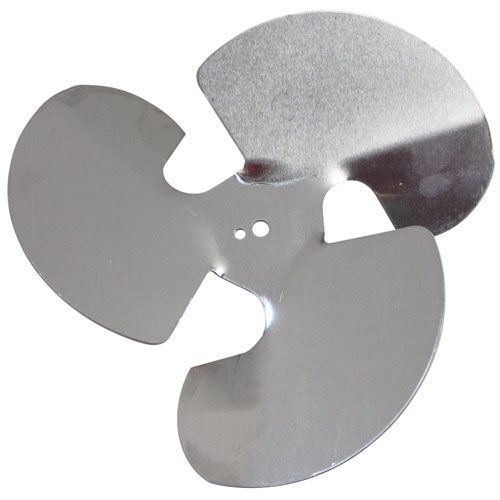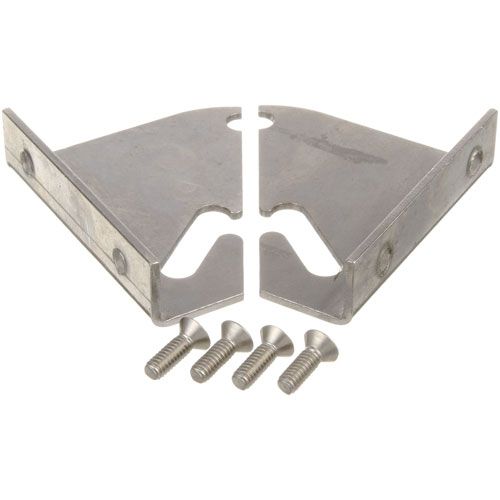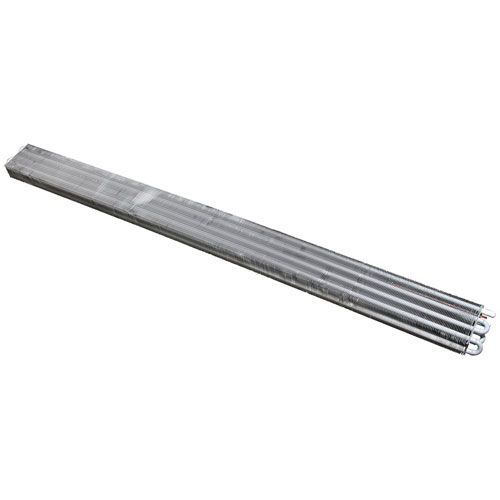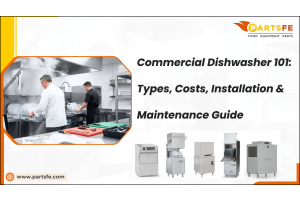Common Countdown Timer Issues in True Freezers and How to Resolve Them
Countdown timer issues in True freezers used in commercial kitchens can lead to improper defrost cycles, temperature fluctuations, or system malfunctions. A common problem is the timer getting stuck, preventing the unit from switching between cooling and defrost modes. This can be due to a faulty timer motor, electrical issues, or worn-out components. Another issue is incorrect timer settings, which can disrupt the freezer’s efficiency. To resolve these problems, first unplug the freezer and inspect the True freezer countdown timer for visible damage. Manually rotate the timer dial to check responsiveness. If it doesn’t advance or reset, replacement is likely needed. Always consult the user manual or a certified technician for proper troubleshooting, and ensure the replacement part is compatible with your True freezer model.
Understanding the Role of the Countdown Timer in True Freezers
The countdown timer in True commercial freezers plays a vital role in maintaining consistent temperature control and ensuring efficiency in commercial kitchens. It is responsible for managing the automated defrost cycle by automatically switching the refrigeration system between cooling and defrost modes at scheduled intervals.
Key Features:
-
Regulates Defrost Cycles: The timer initiates defrost mode after a set period, preventing excessive frost buildup on the freezer evaporator coils, which can block airflow and reduce cooling capacity.
-
Automates System Transitions: During defrost, it temporarily turns off the compressor and activates the defrost heater. Once the cycle completes, it automatically resumes normal cooling operation without manual intervention.
-
Supports Performance and Efficiency: By controlling frost accumulation, the timer helps maintain optimal airflow, consistent temperature control, and uniform cooling throughout the refrigeration unit.
-
Protects Stored Goods: A properly functioning timer prevents temperature spikes or drops during defrost cycles, helping to maintain food safety and preserve product quality.
-
Improves Energy Usage: Efficient and well-timed defrost cycles reduce the compressor’s workload, leading to lower energy consumption and reduced operational costs.
-
Prevents Mechanical Strain: By regulating compressor run times and defrost periods, the timer reduces wear and tear on mechanical components, extending the freezer’s lifespan.
-
Ensures System Reliability: Consistent defrost timing prevents unexpected shutdowns and system failures that can occur due to excessive frost or overheating.
-
Enhances User Convenience: Automating defrost cycles eliminates the need for manual defrosting, saving users and maintenance personnel time and effort.
If the countdown timer malfunctions, it may result in:
-
Failure to defrost, causing excessive ice buildup.
-
Compressor not restarting, leading to rising temperatures.
-
Irregular defrost cycles disrupt cooling efficiency.
Regular maintenance and timely replacement of the countdown timer are essential. Understanding its function allows users and technicians to quickly diagnose and resolve related issues, ensuring long-term reliability of the freezer.
Experiencing issues with your True freezer's countdown timer? PartsFe offers a wide selection of high-quality replacement parts, including defrost timers and defrost heaters from top brands such as True, Hoshizaki, and Scotsman, to ensure optimal performance. Visit today to find the perfect fit for your equipment.
Signs Your True Freezer’s Countdown Timer is Malfunctioning
The countdown timer is essential for regulating the defrost cycle in your True freezer, and when it malfunctions, it can cause several noticeable issues. Recognizing these signs early can help prevent serious damage and costly repairs.
Common signs of a faulty countdown timer:
-
Excessive Frost Buildup: Failure to initiate defrost cycles causes frost to accumulate on freezer condenser coils, blocking airflow and reducing cooling efficiency.
-
Fluctuating or Rising Temperatures: Inconsistent temperature control inside the freezer can put your stored food at risk due to improper defrost timing.
-
Freezer Too Cold or Too Warm: A malfunctioning timer may cause the compressor to run nonstop or not at all, resulting in temperature extremes.
-
Compressor Fails to Restart After Defrost: If the timer doesn’t switch back to cooling mode, the compressor remains off, causing the freezer to warm up.
-
Unusual Noises or Clicking Sounds: Mechanical wear or electrical faults in the timer can produce noticeable noises near the timer component.
-
Increased Energy Bills: Inefficient or prolonged defrost cycles caused by timer problems lead to higher electricity consumption.
If you notice any of these symptoms, inspect or replace the countdown timer promptly to maintain optimal freezer performance and protect your stored food from spoilage.
Common Causes of Countdown Timer Problems in True Freezers
Countdown timer issues in True freezers often stem from a variety of mechanical and electrical factors that disrupt the defrost cycle. Understanding these common causes helps in diagnosing and fixing problems quickly.
-
Wear and Tear of the Timer Motor: Over time, the motor can weaken or seize, preventing the timer from advancing properly and disrupting the automatic switching between defrost and cooling modes. This is common in older or heavily used units.
-
Electrical Faults: Wiring problems, loose connections, blown fuses, moisture, or corrosion inside the timer housing can interrupt power or cause erratic timer operation.
-
Improper Timer Settings or Calibration Errors: Incorrect settings can lead to improper defrost intervals, causing frost buildup or increased energy use.
-
Faulty Defrost Thermostat or Heater: Malfunctioned thermostats and heaters can indirectly cause the timer malfunction by triggering irregular defrost cycles.
-
Environmental Factors: Extreme temperatures or high humidity can accelerate the degradation of timer components.
-
Physical Damage: Accidental impacts or improper handling during maintenance can impair the timer function.
Routine inspections, proper installation, and timely replacement of worn parts are essential to prevent these issues and keep your True freezer operating efficiently.
Step-by-Step Troubleshooting for Countdown Timer Issues
Troubleshooting countdown timer issues in your True freezer can help you identify and fix problems before they escalate. Follow these steps to diagnose common timer-related faults safely and effectively:
Step 1: Unplug the Freezer
Always disconnect power before inspecting or handling any components to avoid electrical hazards.
Step 2: Locate the Countdown Timer
Refer to your True freezer’s manual to find the timer, usually near the compressor or control panel.
Step 3: Inspect for Visible Damage
Check the timer for cracks, corrosion, burnt marks, or loose wiring connections that may cause malfunctions.
Step 4: Manually Advance the Timer
Using a flat screwdriver, gently turn the timer dial clockwise to simulate a defrost cycle. Listen for clicks or watch for changes in compressor operation to confirm responsiveness.
Step 5: Check Electrical Continuity
Use a multimeter to test the timer’s continuity and ensure it’s allowing current to pass during the correct cycle phases.
Step 6: Verify Defrost Heater and Thermostat
Sometimes the issue lies with connected parts like the defrost heater or thermostat, so test these components as well.
Step 7: Replace if Necessary
If the timer doesn’t advance manually, shows no continuity, or the freezer continues malfunctioning, replace the timer with a compatible part.
Step 8: Restore Power and Monitor
After repair or replacement, plug in the freezer and monitor its defrost and cooling cycles for proper function.
Following these steps helps maintain your freezer’s efficiency and prolongs its lifespan.
Check out this guide on fixing Continental refrigerator problems to quickly diagnose common issues and keep your equipment running efficiently.
How to Replace a Faulty Countdown Timer
Replacing a faulty countdown timer in your True freezer is a straightforward process that can restore proper defrost cycles and improve overall performance. Follow these steps carefully:
-
Unplug the Freezer: Always disconnect power before starting to ensure safety and prevent electrical shock.
-
Locate the Timer: Find the countdown timer, usually near the compressor or inside the control panel. Check your True freezer’s countdown timer manual if needed.
-
Remove Access Panels: Take off any covers or panels to expose the timer assembly.
-
Document Wiring: Take clear photos or detailed notes of the wiring configuration before disconnecting to ensure correct reassembly.
-
Disconnect Wiring: Carefully unplug the wiring harness or disconnect the wires attached to the faulty defrost timer.
-
Remove the Faulty Timer: Unscrew or unclip the timer from its mounting bracket and remove it.
-
Install the New Timer: Secure the replacement timer, ensuring it is compatible with your freezer model.
-
Reconnect Wiring: Reattach the wires according to your photos or notes, making sure all connections are tight and secure.
-
Reassemble and Power On: Replace any panels or covers, plug the freezer back in, and restore power.
-
Monitor Performance: Observe the defrost and cooling cycles to confirm the new timer functions properly.
If you encounter issues during the process, consider consulting a professional technician for safe and accurate replacement.
Preventive Maintenance Tips to Avoid Timer Issues
Preventive maintenance is key to avoiding countdown timer problems in your True freezer, ensuring it runs smoothly and efficiently over time. Regular care not only extends the timer’s lifespan but also prevents costly repairs and food spoilage. Follow these tips:
-
Keep the Freezer Clean And Dry: Moisture and dirt around the timer and electrical parts can cause corrosion and short circuits. Regularly wipe down the timer housing and nearby areas.
-
Check for Proper Ventilation: Ensure the freezer has adequate airflow around the compressor and timer area to prevent overheating, which can damage electrical components, including the timer.
-
Monitor Defrost Cycles Regularly: Keep an eye on how often and how long defrost cycles run. Unusually long or short cycles can indicate timer problems developing early on.
-
Avoid Overloading the Freezer: Excessive food or obstructed airflow inside the freezer can cause the compressor and timer to work harder, increasing wear and the risk of timer failure.
-
Use Correct Replacement Parts: If any component related to the defrost system is replaced, always use manufacturer-approved parts to ensure compatibility and avoid timer malfunctions.
-
Inspect Wiring and Connections Periodically: Check for loose, frayed, or damaged wires and tighten or replace them as needed to maintain consistent power flow.
-
Avoid Frequent Power Interruptions: Power surges or unplugging the freezer often can stress the timer’s motor and circuitry. Use a surge protector and keep the freezer plugged into a stable power source.
-
Follow Manufacturer Guidelines: Adhere to recommended defrost cycles and maintenance schedules to ensure the timer functions properly.
By implementing these preventive steps, you reduce the risk of timer malfunctions, enhance freezer reliability, and protect your stored food from spoilage.
Check this helpful guide on how to clean commercial refrigerator condenser coils to restore optimal cooling and prevent timer-related issues.
When to Call a Professional Technician
In commercial kitchens, True freezers are vital for food safety and smooth operations. While staff can handle basic upkeep, timer issues often need expert repair. Call a professional technician if you notice the below issues:
-
Persistent Temperature Issues: If your freezer isn’t maintaining proper cooling even after resetting or inspecting the timer, there may be a deeper problem with the defrost system or compressor.
-
Electrical Faults: Burnt wires, frequent breaker trips, or an unresponsive timer, even after replacement, should only be handled by professionals to avoid safety hazards.
-
Unusual Noises From the Control Area: Clicking, buzzing, or humming near the timer could indicate internal component failure or a misfiring timer that needs expert inspection.
-
Defrost Cycle Irregularities: If the defrost cycle runs too long, too short, or not at all, the timer or its associated parts may require testing or calibration beyond basic DIY skills.
-
Uncertainty During Repair: If you are unsure about wiring, testing with a multimeter, or installing a replacement timer, avoid the risk and call a trained technician.
Professional service ensures accurate diagnosis, proper installation, and long-term equipment reliability.
Proper management and timely maintenance of the countdown timer in True freezers are essential to avoid operational disruptions in commercial kitchens. If your True freezer’s countdown timer is not working, it can seriously affect defrost cycles, food safety, energy efficiency, and overall equipment performance. By understanding the signs of failure, addressing common issues, and knowing when to involve a professional technician, you can extend the life of your freezer and maintain consistent refrigeration standards. Preventive care, regular inspections, and using genuine replacement parts go a long way in ensuring your equipment runs reliably and efficiently under high-demand conditions.
FAQs
Can power surges damage the countdown timer in a True freezer?
Yes, power surges can damage the countdown timer by affecting its internal circuits or causing short circuits. Using a surge protector can help prevent this issue.
How long does a typical True freezer countdown timer last?
A typical True freezer countdown timer lasts between 5 to 10 years, depending on usage, environmental conditions, and maintenance frequency.
Are there any smart or digital countdown timers compatible with True freezers?
Yes, several smart or digital countdown timers are compatible with True freezers, offering features like programmable cycles and remote monitoring for better control.











